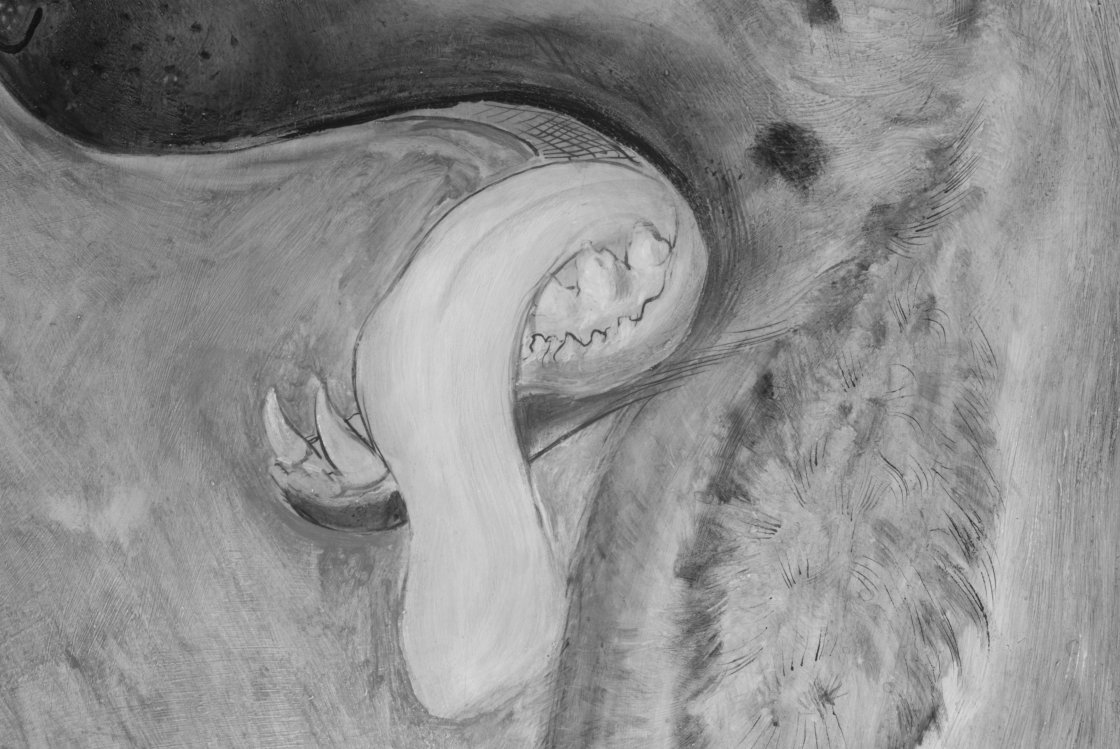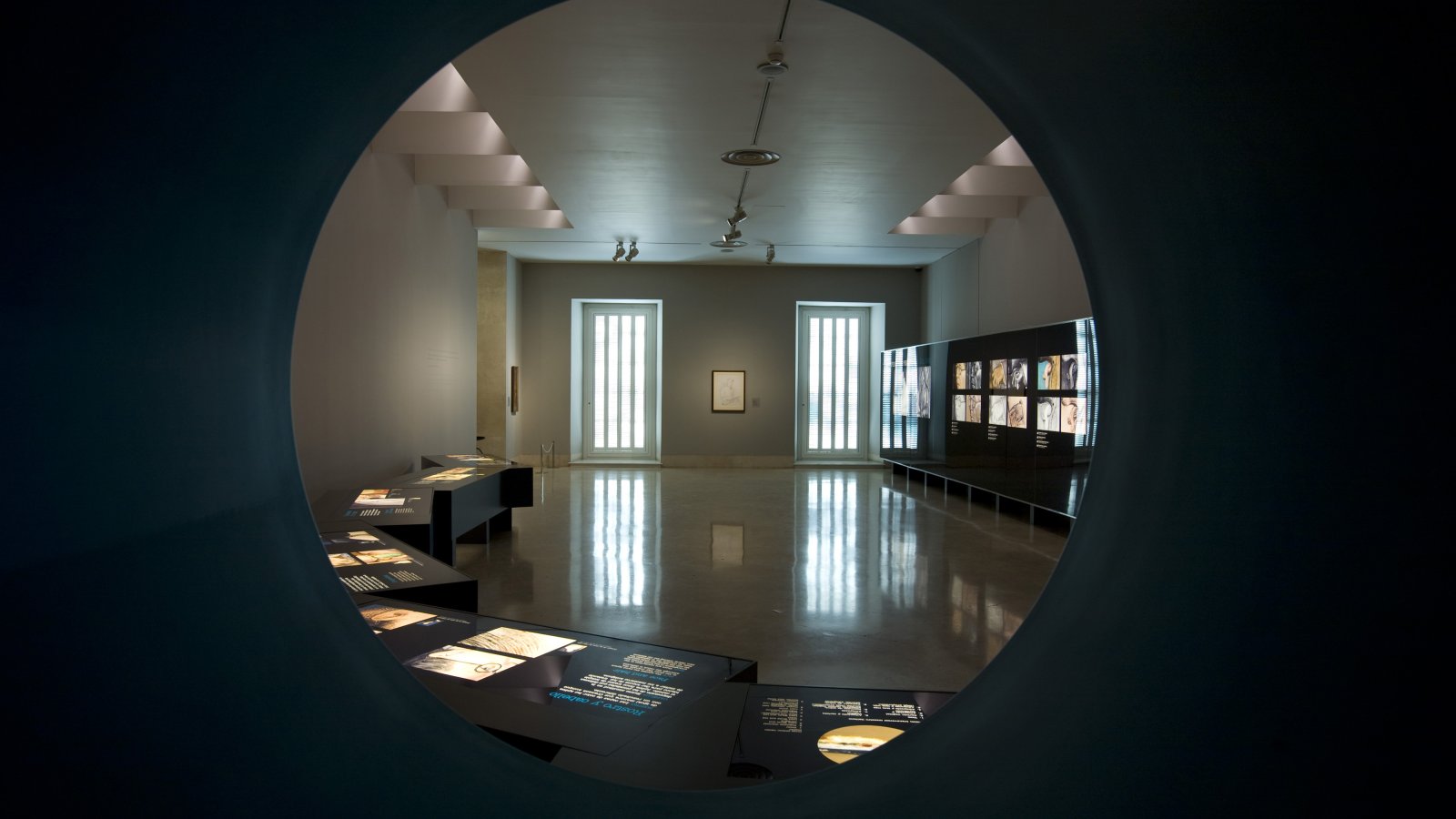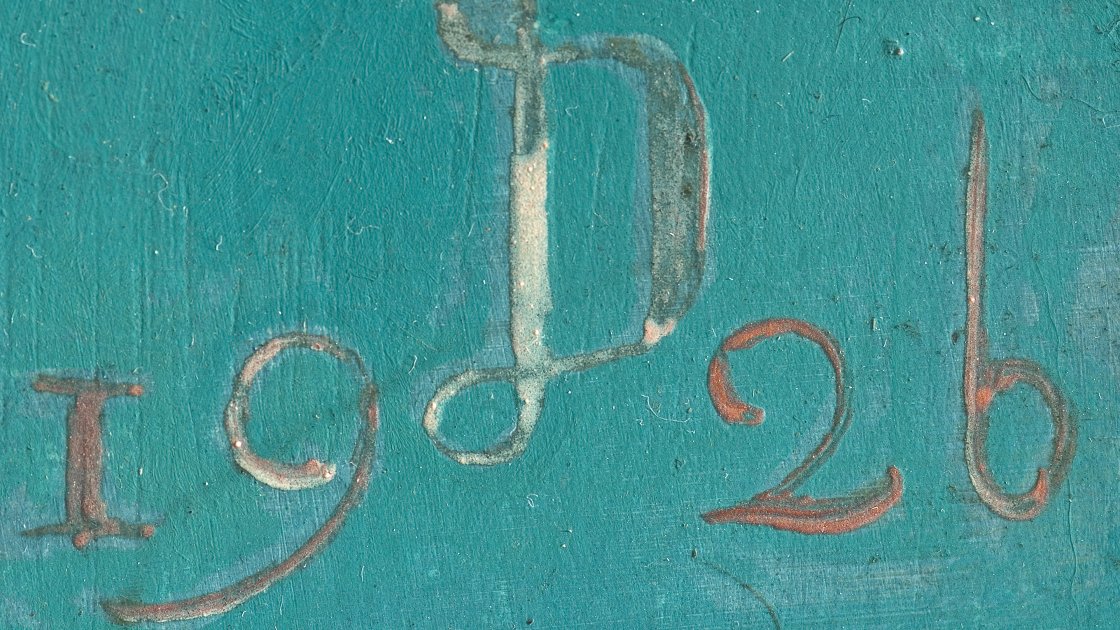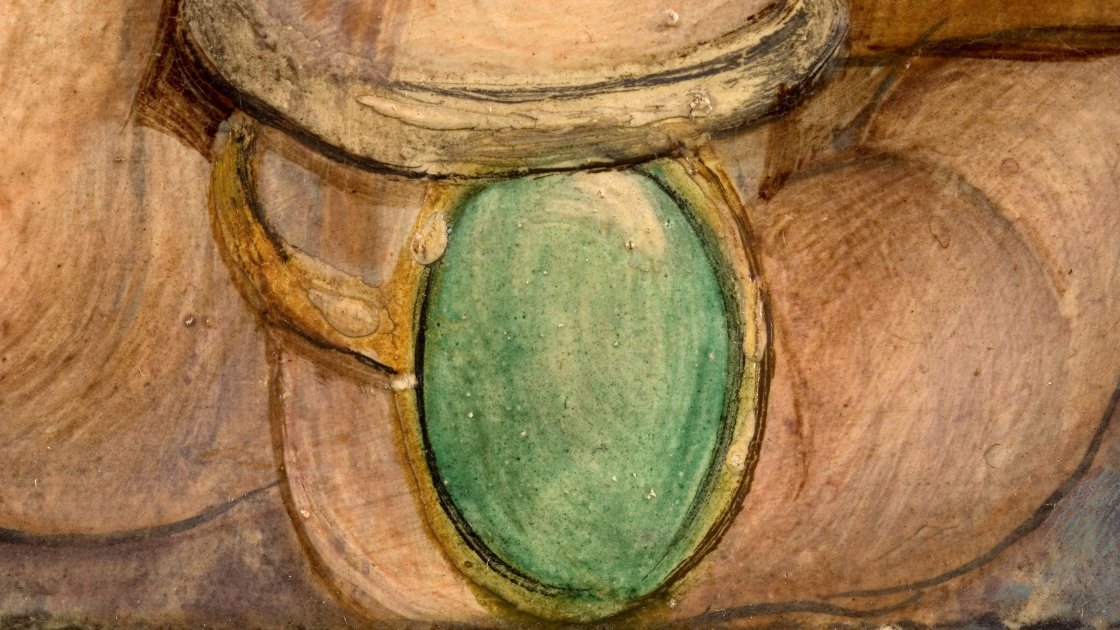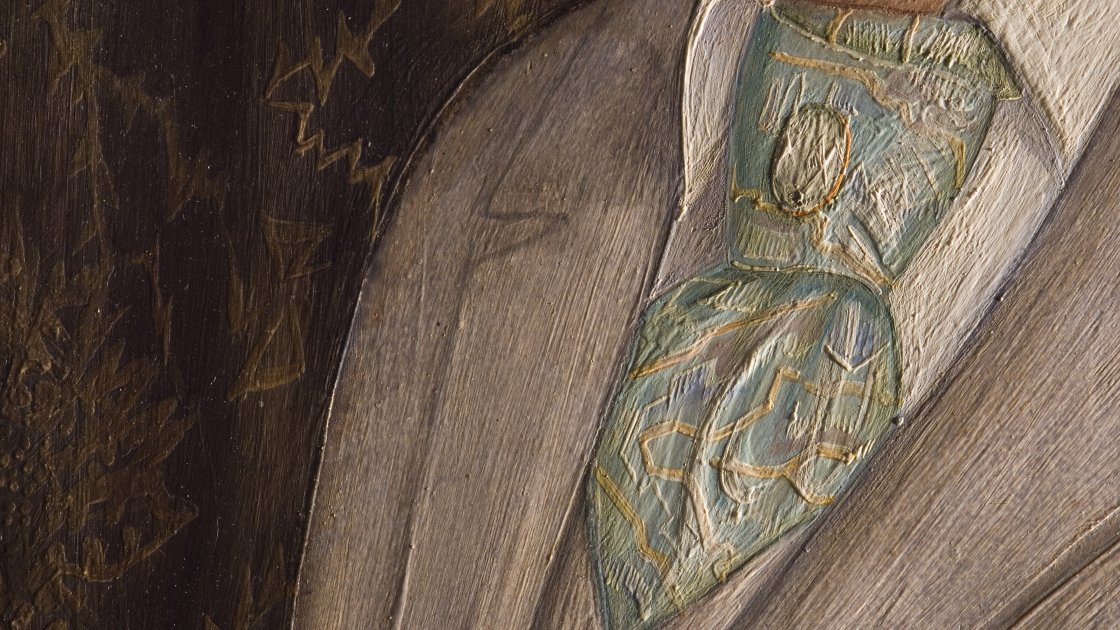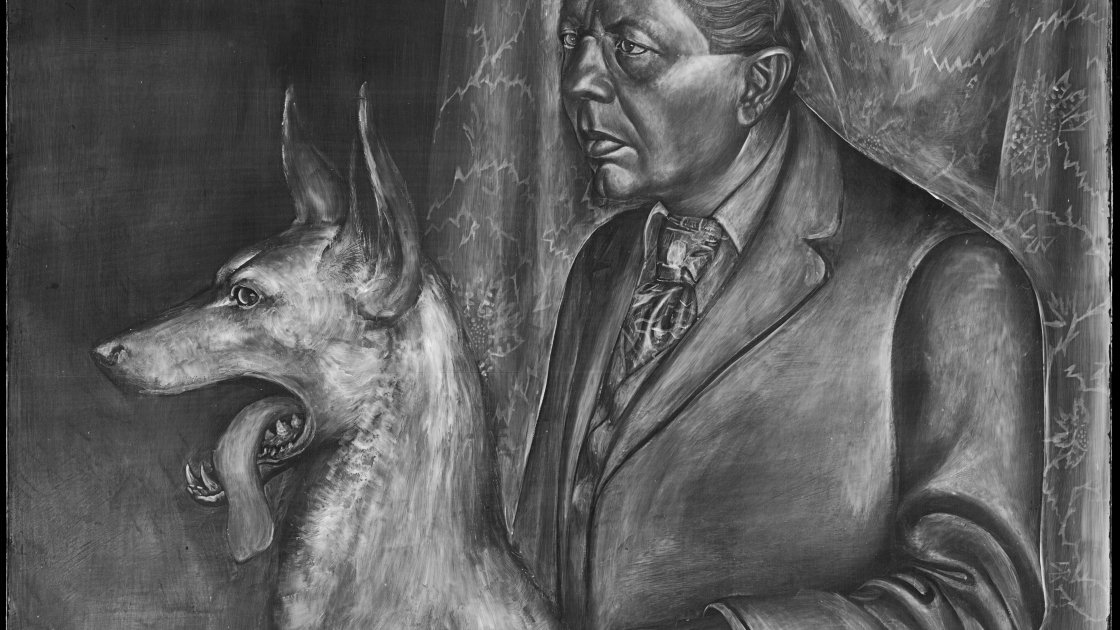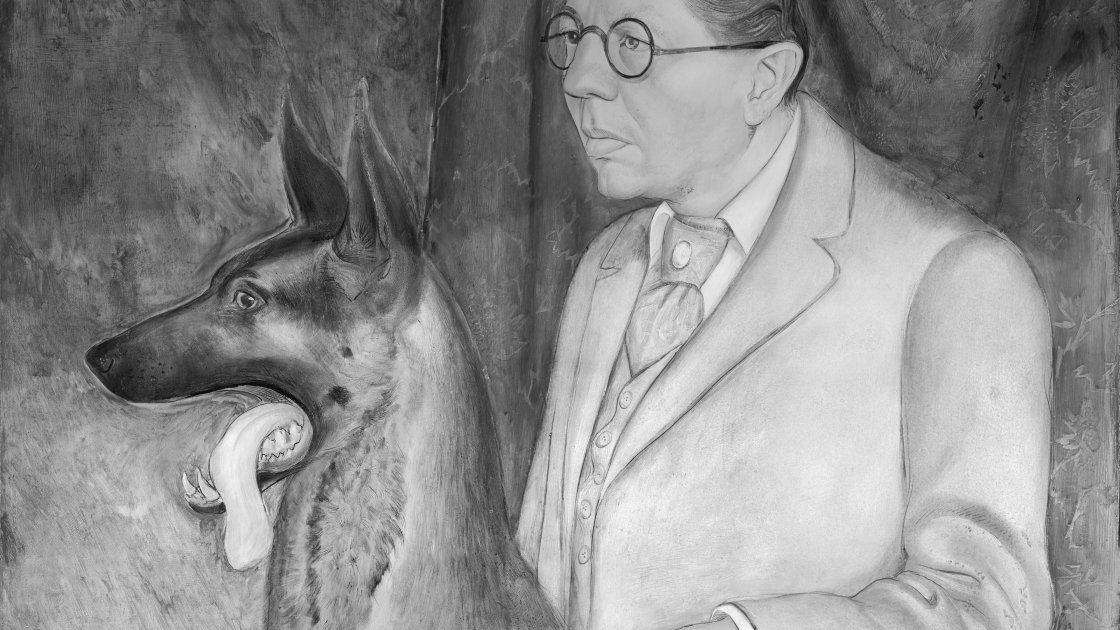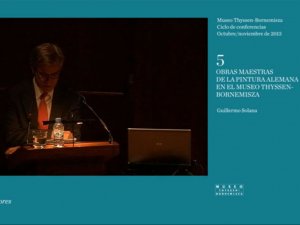Technical study
The technical study of the painting Hugo Erfurth with dog shows the investigation carried by the Conservation Department of the Thyssen-Bornemisza Museum and whose aim has been to divulge the creative process, the techniques and the materials used by Otto Dix.
This project states the results obtained in the Museum’s laboratory with the use of X-Rays, infrared photography and microsamples, which have been fundamental for identifying the technique and the composition of materials, as for the distribution of the different stratum of the painting.
Hidden inscriptions
There are two inscriptions signed by Dix on the back that provide information about the painting. The first one refers to the technique and offers advise for handling:
“Mixed technique. Last layer oil. Linseed oil.”
“It should not be varnished before Sept. 27. Dix”
The second one, located in the upper right corner and smaller in size, gives facts on the varnish’s commercial brand: “Lukas matt. Mixed with bee’s wax 50/50”.
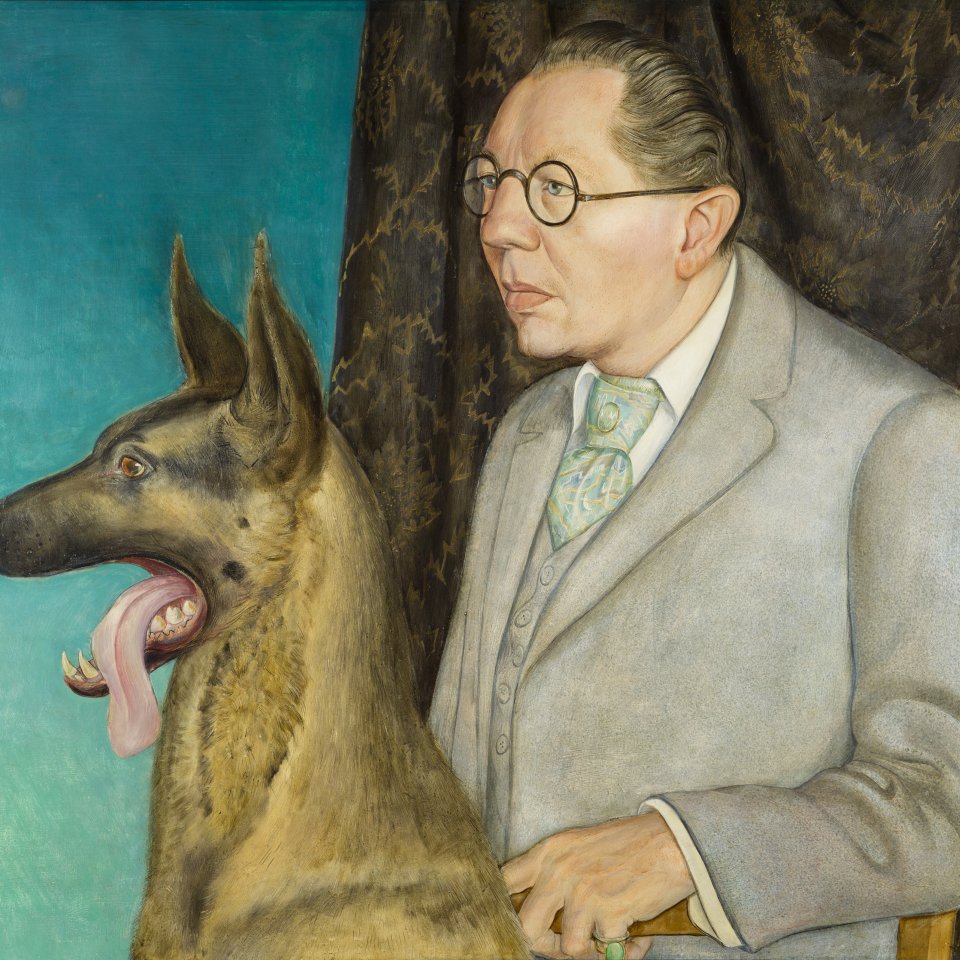
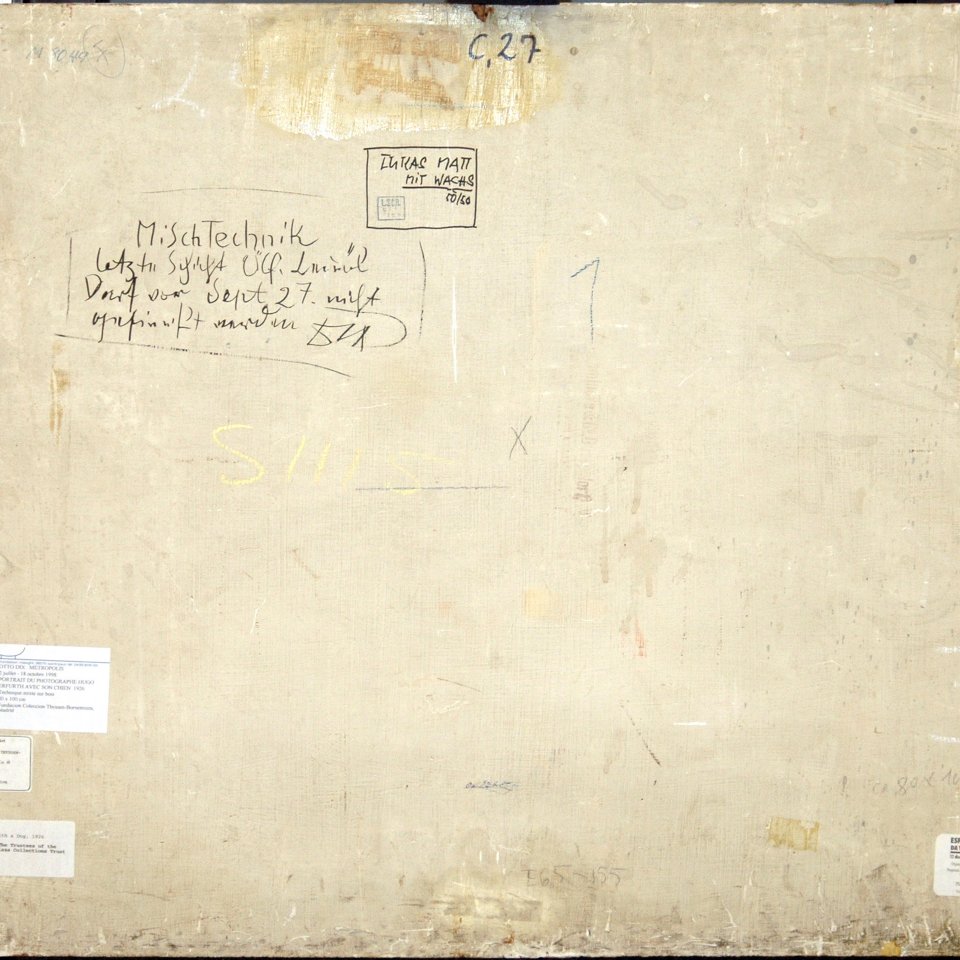
The secret of X-ray
Testing technique that consists in radiating an object with X-rays, and what stays registered in a radiographic plate placed behind, shows the different absorptions of the materials that compose it. By means of the electromagnetic radiation they emit, these rays can go through all paint layers including the support and provide in a unique image all the information about the painting: the condition state, the materials used, the creative process of the artist… so we can explore the painting with total detail.
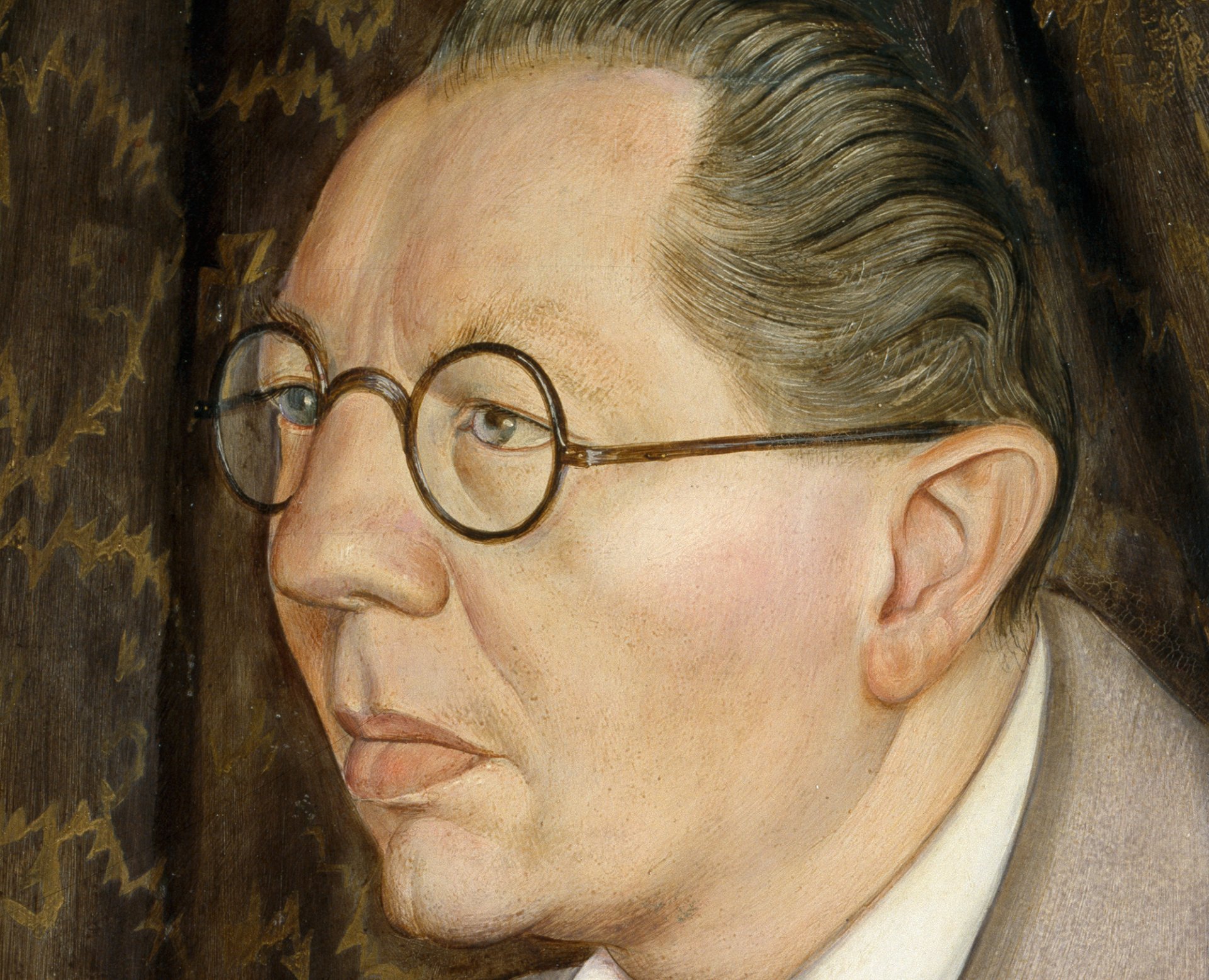
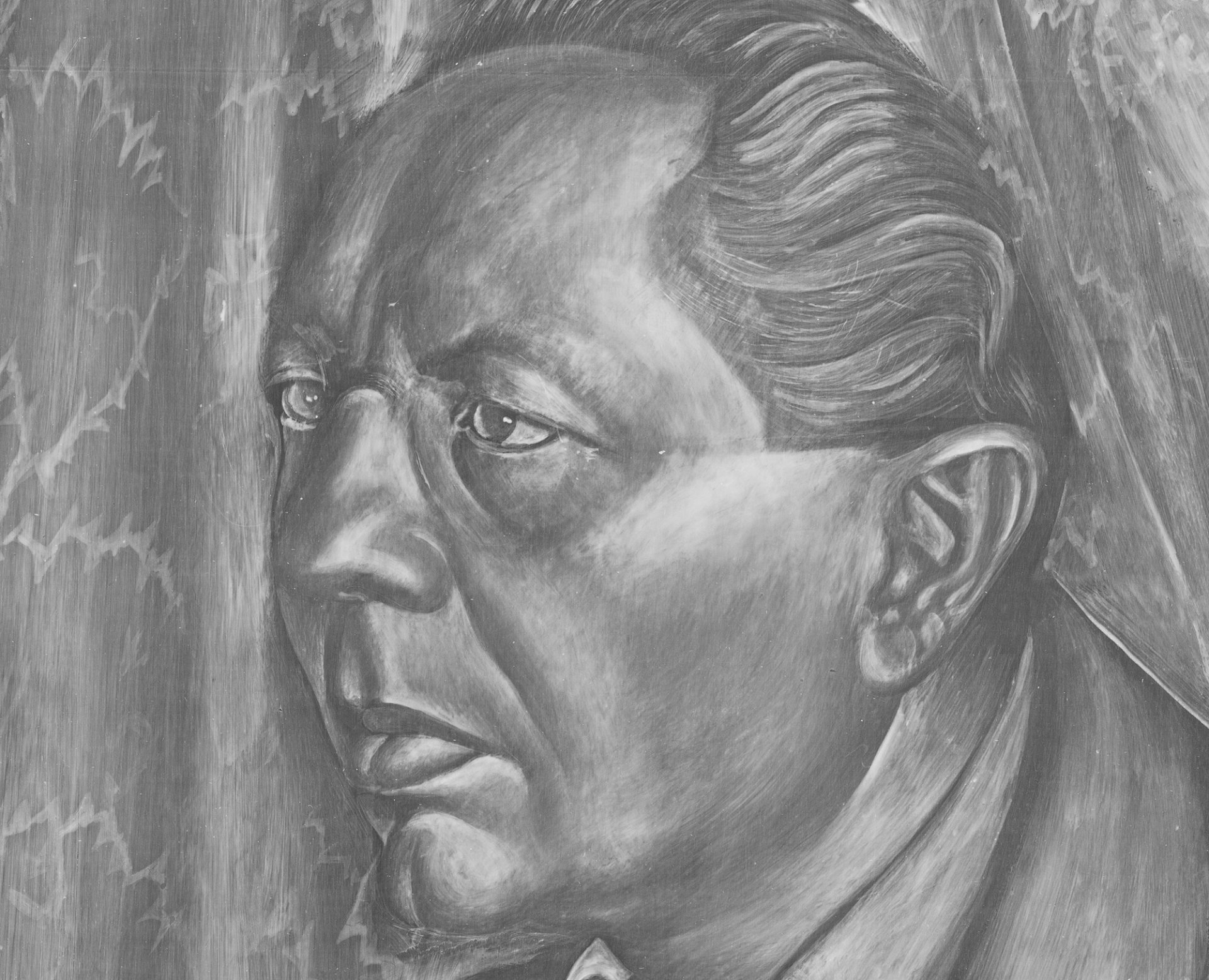
Visible light: Through the glazing technique, Dix obtains the sense of transparency and delicate textures, the effect of volume and modelling in the flesh by using lights and shadows under these glazes. We observe a meticulous treatment in the eyebrows, which were painted with a very thin brush.
X-Ray: The omission of the glasses in the XR plate stands out. Probably the material that composes the pigment used to paint them does not contain heavy metals and is not recognizable in the X-ray (they are painted over the finished face) except between the eyebrows. The dark area in the upper part of the nose which corresponds to the bridge of the glasses, is named “paint reservation”, and the reason for which it looks darker is that it was not previously painted, leaving space to place the glasses, or maybe that the artist used an earth pigment that easily goes through the X-rays.
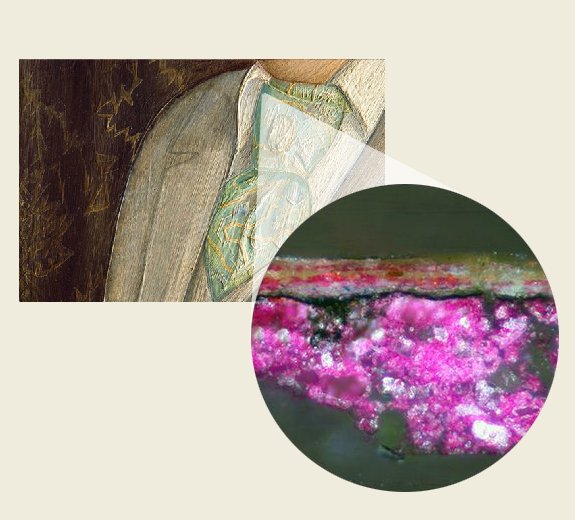
Microsample taken from the tie
In the microsample taken we proved that the paint layers were applied with an oily tempera (dyed in the laboratory with a red colouring to locate them) inserted with others with linseed oil and/or mastic resin (recognized as thin layers that have not been dyed with the red colouring that is specific for proteins). This cross section illustrates the distribution of layers present in Dix’s complex technique of the studied painting. Taken with Mplan objective (20X/ 0,40).
Infrared reflectography
Testing technique that consists in illuminating with incandescent lamps and registering the reflected radiation with a system sensible to the infrared band of the spectrum. The radiation penetrates in the painting permitting the visualization of the underdrawing for its study. It shows a very important part of the artist’s working process, generally unknown to the general public, as it lies hidden under the painting. These drawings reveal changes of composition, pentimenti… in occasions it even makes a sharper observation of signatures and inscriptions possible.
The line of the drawing is steady and concise. He uses a very thin brush that helps him imitate the qualities of the dog’s hair. The gums are outlined and the palate is cross hatched.
